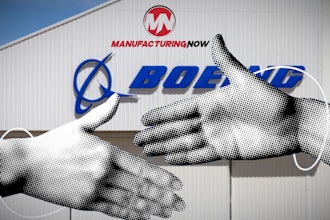An Epicor® White Paper
Four Quick Ways
To Unlock Hidden
Manufacturing Capacity
1Introduction
With the economic upturn, the times of low volume and rationalization are over.
Volume is steadily rising for many, and manufacturers are now dealing with a
different problem than cost-cutting—how to meet increasing demand after resource
cuts and no new investments in productivity improvement in recent years.
With your manufacturing operations already running close to capacity, the traditional
ways of gaining new capacity is to make large capital investments, or to outsource
some of the new manufacturing demand. These are challenging tactics as getting
new resources in line will take time and there’s no guarantee that the numbers will
continue to climb.
You do, however, have a third option available to you. You can meet the increased
demand by freeing up needed resources within your current operations. The
key is identifying areas of improvement within your existing operations with
real-time manufacturing information and accurate, consistent metrics to make
improvements in efficiency.
The Steps
Step 1: Reduce downtime losses
In an industry where reliability is key, and downtime hits your bottom line hard,
reducing losses can yield great results. In addition to cost savings, reducing
downtime leads to proportional increases in manufacturing capacity. Best practices
implemented on a single line can be easily transferred to other lines, multiplying the
impact and finding even more needed capacity.
Efforts to reduce downtime routinely have a high probability of success. Sometimes
it is possible to eliminate an entire loss category with a simple change in work
practice. For example, many companies have discovered that it can be very effective
to stagger break and lunch intervals; others have eliminated a specific loss category
entirely by replacing small parts, or increasing the frequency of routine maintenance.
Step 2: Reduce minor stops
Minor stops are short-duration hesitations and stops, usually less than five minutes—
short enough to be “unnoticed” but long enough to disrupt the business and
efficiency. These can add up to significant loss of manufacturing time, especially if
you don’t have visibility around the number of and reasons for minor stops. If you
have the right tools in place, it’s reasonable to expect a high level of success when
attacking minor stops: 50-75% reduction. However, remain cautious because minor
stops can reappear. To sustain gains, world-class manufacturers consistently examine
root-cause indicators and continue to make adjustments.
Step 3: Eliminate production variability and quality loss
Production consistency translates into a more reliable and predictable supply
chain, increasing the rate of first time ‘perfect orders’ while cutting time lost due
to rework. Stable lines run at higher production rates consistently, resulting in
higher volume.
Four Quick Ways To Unlock Hidden Manufacturing Capacity
2Quality loss and rejected product has a double impact: material and labor. A
standard overall equipment effectiveness (OEE) calculation includes a reject as a lost
opportunity for production which impacts capacity. Therefore, when calculating
OEE, it is important to consider the cost of material and labor. There is no “typical”
operation, and the range of quality variation can be 1% to 5% or even as much as
10% of total production.
Consider this: the cost of material can be four times the cost of labor. From a pure
cost perspective, a 1% first-pass reject rate translates to 4% loss. You can vary the
analysis to reflect production improvement, cost reduction and probability of success.
Step 4: Establish priorities to tackle loss
It’s important to realize that not all downtime is equal. Applying cost information
with the same analysis may reveal an entirely different perspective—the cost of
downtime. A cost-of-downtime analysis can be used to establish priorities with
a financial context. Moreover, a probability of success analysis across loss
categories will prepare operations professionals to prioritize efforts, and achieve
sustainable improvements.
Operations excellence professionals generally focus on lean practices to establish
production priorities. When they consider cost factors as part of the evaluation, they
have the ability to focus on those areas that will have the highest impact on the
financial performance of the company.
To quantify the financial impact of each category, it is necessary to understand
material and labor cost components. Labor-intensive operations have a greater risk
of downtime throughout the entire manufacturing process. Meanwhile, operations
with high material costs usually experience significant material loss near the end of
the production line. Waste and material loss due to rework may be more significant
than the cost of labor.
Conclusion
The best and easiest way to find hidden capacity is to examine operations with
systems that monitor and analyze manufacturing operations in real-time. These
systems provide crucial information to help you find lost capacity, and avoid costly
investments for new machinery, additional labor, or contract manufacturing.
Four Quick Ways To Unlock Hidden Manufacturing Capacity
Latin America and Caribbean
Blvd. Antonio L. Rodriguez #1882 Int. 104
Plaza Central, Col. Santa Maria
Monterrey, Nuevo Leon, CP 64650
Mexico
Phone: +52.81.1551.7100
Fax: +52.81.1551.7117
Australia and New Zealand
Level 34
101 Miller Street
North Sydney NSW 2060
Australia
Phone: +61.2.9927.6200
Fax: +61.2.9927.6298
Asia
238A Thomson Road #23-06
Novena Square Tower A
Singapore 307684
Singapore
Phone: +65.6333.8121
Fax: +65.6333.8131
Europe, Middle East and Africa
No. 1 The Arena
Downshire Way
Bracknell, Berkshire RG12 1PU
United Kingdom
Phone: +44.1344.468468
Fax: +44.1344.468010
Worldwide Headquarters
San Francisco Bay Area
4120 Dublin Boulevard, Suite 300
Dublin, CA 94568 USA
Toll Free: +1.888.448.2636
Direct: +1.925.361.9900
Fax: +1.925.361.9999
Contact us for more information on Epicor Products and Services
+1.888.999.6995 [email protected] www.epicor.com
About Epicor
Epicor Software Corporation is a global leader delivering business software
solutions to the manufacturing, distribution, retail, and services industries. With
more than 40 years of experience, Epicor has more than 20,000 customers in over
150 countries. Epicor solutions enable companies to drive increased efficiency and
improve profitability. With a history of innovation, industry expertise, and passion for
excellence, Epicor inspires customers to build lasting competitive advantage. Epicor
provides the single point of accountability that local, regional, and global businesses
demand. For more information, visit www.epicor.com.
This document is for informational purposes only and is subject to change without notice. This document and its contents, including the viewpoints, dates and functional content expressed herein are believed to be accurate as of its date of publication,
October 2013. However, Epicor Software Corporation makes no guarantee, representations or warranties with regard to the enclosed information and specifically disclaims any applicable implied warranties, such as for fitness for a particular purpose,
merchantability, satisfactory quality, and reasonable skill and care. As each user of Epicor software is likely to be unique in their requirements in the use of such software and their business processes, users of this document are always advised to
discuss the content of this document with their Epicor account manager. All information contained herein is subject to change without notice and changes to this document since printing and other important information about the software product
are made or published in release notes, and you are urged to obtain the current release notes for the software product. We welcome user comments and reserve the right to revise this publication and/or make improvements or changes to the products
or programs described in this publication at any time, without notice. The usage of any Epicor Software shall be pursuant to an Epicor end user license agreement and the performance of any consulting services by Epicor personnel shall be pursuant
to the standard services terms and conditions of Epicor Software Corporation. Epicor is a registered trademark of Epicor Software Corporation. All other trademarks mentioned are the property of their respective owners. Copyright © 2013 Epicor
Software Corporation. All rights reserved.
Learn How to Unlock Hidden Manufacturing Capacity
Your organization can meet increased demand by freeing up needed resources within your current operations. The key is identifying areas of improvement within your existing operations with real-time manufacturing information.
Latest in Home
Regional Manufacturing: The Future of a Resilient Industry
September 16, 2025
NHTSA Investigating Tesla Door Handles That Could Trap Passengers
September 16, 2025
Ford to Cut Up to 1,000 Jobs at German Plant as EV Demand Lags
September 16, 2025



















